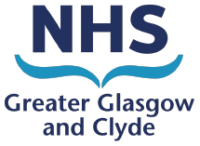This section looks at more in depth digital resources related to Virtual Patient Management. A term that describes all the work relating to patient care that isn’t face-to-face in nature.
Virtual Patient Management
Groupwork
- Groups have been running for some time in mental health and AHP services using Teams.
- Near Me has recently upgraded to allow groups to run from its platform.
- For more help with this put in a request through eHelp or Chat with Me on Teams
Website build
- Your service will greatly benefit from having its own site to promote your work and provide lots of useful information to your patients.
See Podiatry as a really good example.
- You require to get access to WordPress and you will be given help and instruction from the Web Team, you can find out more on their Website SharePoint site. See Leading Digital pages for more information.
Physiotools
- Physiotherapists and other AHPs such as Podiatry and Orthotics can use this tool for free. Log a call with eHelp to have it downloaded to your PC or laptop. Have a look at the training stream. A SWAY is also available on request from Gillian.Ferguson6@nhs.scot
- Can you make use of QR codes and email facility to make it easy for your patients to access?
- Can you make templates for commonly used exercises and activities?
- Add your own videos and photographs if required.
- Just remember to limit the patient data the site asks for. Stick to initials only and always gain consent from the patient before making use of their email.
Netcall Patient Hub
- This is a new system to NHSGGC. Information can be transferred electronically to your patients and including a digital appointment service.
- They will be able to receive notification of their appointment and interact by accepting, cancelling or requesting to rebook.
- It can be used to send leaflets, questionnaires and test results. The tonsillectomy service are now using a pre-op questionnaire which the patient completes and sends back with no need for a face-to-face appointment.
- If you think your service would benefit from using this in the future, put in a project request via the Project Management Office.
Email
- Email is fast becoming a popular way for patients to connect with their healthcare professionals.
- Use your own or set up a generic mailbox for your service.
- Review the Information Security: Acceptable Use policy for information on emailing patients to ensure safe use. It’s a safe and secure method of delivery for information such as exercise programmes, advice following provision of equipment, quick confirmation of appointment time.
- It shouldn’t be used for detailed clinical discussion and must have the minimum of identifiable data included in the body of text.
Data coding
- Most of us now write in to an electronic patient record.
- All the systems have the function of using ‘structured’ data by linking to read codes or Snomed CT.
- Services can pull lots of information by using simple coding to, for example, code a referral type or condition.
- You can see how making use of this gives access to powerful data about your service.
- Talk to your service leads about using this functionality.
Other
Asynchronous appointments
- Asynchronous appointments or those not done in ‘real time’ can be used to cut down face-to-face visits.
- Allows patients to answer a questionnaire or provide a short video or photograph in the comfort of their own home.
- You can then view this later before making a decision about further therapy.
- This image would need to be part of the clinical record and there are several products being tried and tested – SCIT app dermatology, vCreate neurology.
MIMS
- The MIMs (Medical Illustration Management System) upgrade is a project in progress to provide a stable system for NHSGGC which allows capture of all types of clinical image.
Referral Triage
- Active Clinical Referral Triage isn’t a specific digital tool. It is a model of working now used widely across services. It facilities virtual patient management and allows faster and improved flow of work getting the patient seen by the right clinician by the most appropriate method. Can this model be implemented within your service?
